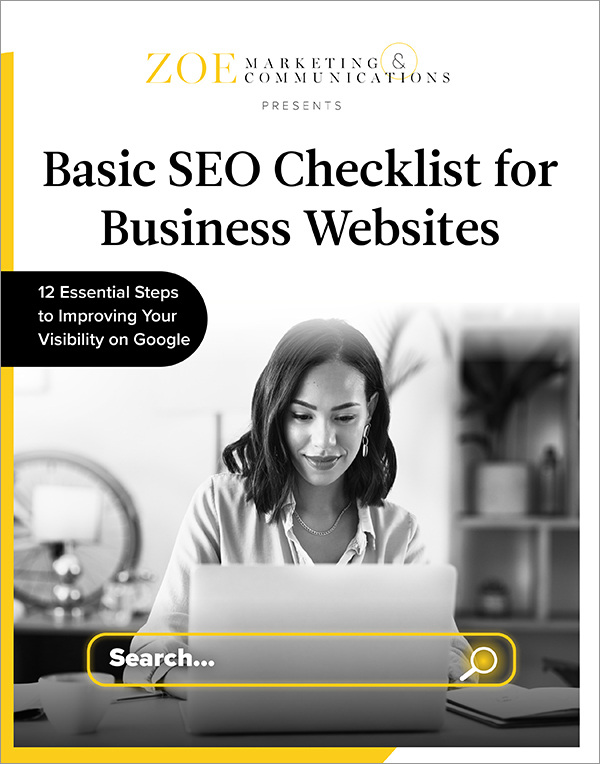
Download Your Basic SEO Checklist
Unlock the fundamentals of search engine optimization. This checklist provides step-by-step guidance to improve your site’s search ranking.
March 5th, 2024 | 2 min. read
By Kim Kovelle

Does this sound familiar? Your company has asked you to “shop around” for marketing agencies, but you’re not the decision-maker — or you have only $500 for the year. Quickly, you realize this marketing budget won’t stretch far.
We hear you. Specifically, Dawn Ferencak, a Zoe Marketing & Communications senior marketing strategist, hears you. She speaks to dozens of businesses in this situation every month.
“It’s also common that people have no idea what the budget is,” Ferencak says. “Industry trends shift, or it could be a change in staffing. There can be a lot of back and forth, and you’re losing valuable time that could be spent on marketing.”
It’s a hard truth that marketing isn’t truly free, but with some time and effort, you can still make meaningful progress. Here are six actionable tips to get started.
Unlock the fundamentals of search engine optimization. This checklist provides step-by-step guidance to improve your site’s search ranking.
Your Google Business Profile (GBP) is often the first impression people have of your business. Claiming and optimizing it is essential. “It’s important to create a good first impression,” Ferencak says.
Google Analytics 4 (GA4) tracks activity on your website — and what’s working.
“I work with many small businesses, and often, someone else built their website — and they don’t know how to use GA4,” Ferencak shares. To get started:
A user-friendly website builds trust and encourages visitors to stick around — and helps build trust, too.
“When people visit your site, they expect these basic things,” Ferencak says.
Focus on one or two platforms where your audience is active. Building trust is more effective than hard selling.
Search engine optimization (SEO) helps your business appear in relevant searches.
As you grow, work toward setting aside a percentage of your revenue for marketing.
Marketing with no money is a challenge, but these steps show you can still make progress.
“I always bring businesses back to the basics: What are your goals? And who is your target audience?” Ferencak says. “Knowing what you want is the place to start.”
Ready to take the next step? Talk to us. Zoe Marketing & Communications can help you build a marketing budget tailored to your goals.
Still a ways off from that sort of investment? These next steps can help:

Unlock the fundamentals of search engine optimization. This checklist provides step-by-step guidance to improve your site’s search ranking.
As Zoe Marketing & Communications’ content manager, Kim Kovelle brings over 20 years of writing and editing experience in metro Detroit. She has strong roots in community journalism and a knack for making complicated topics make more sense.
